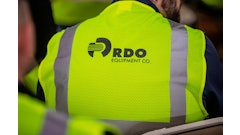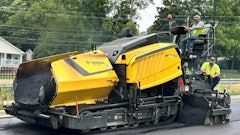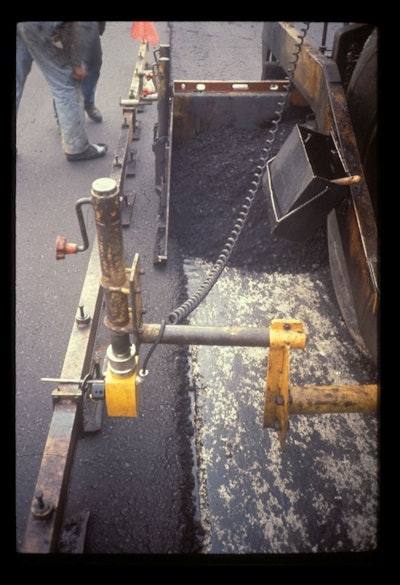
Once you’ve paved the first lane on a road or parking lot you’ll need to return to your starting point and pave the second pass. In the meanwhile the first lane – including the unsupported edge -- has been compacted. The edge of the first lane should have a 60-degree angle – it should not be vertical -- which enables it to easily accept the mix in the new pass.
So what are the “best practices” for placing this fresh, hot material adjacent to the cooler, compacted first lane to achieve a well-constructed longitudinal joint? Two items need to be considered:
- What should be the thickness of the uncompacted mix from lane 2 over the top of the compacted mix at the edge of lane 1?
- How much material overlap should there be of the mix from lane 2 over the top of lane 1?
Dense-graded asphalt concrete mix typically compacts at a rate of 1/4 inch per inch. So to achieve a compacted thickness of 1 inch, the mix usually must be placed from the back of the paver screed at an uncompacted thickness of about 1-1/4 inches. To obtain a compacted thickness of 2 inches, the uncompacted mix must be placed to a thickness of approximately 2-1/2 inches. When mix from lane 2 is placed over the top of the compacted mix on lane 1, the mix needs to be high by the amount of compaction that will occur.
Contractors recognize there needs to be some overlap of material, the question is “how much?” You do need to put new material adjacent to and over the top of the compacted edge of the first pass, but it’s essential to carefully control the amount of overlap. If too much mix is placed over the compacted edge of lane 1, it will have to be removed by raking the joint or it will be crushed by the rollers. If not enough mix is placed over the edge of the first lane, a depression or dip will occur on the lane 2 side of the longitudinal joint. In either case, the joint will not perform properly.
Ideally 1 to 1-1/2 inches of mix overlap is all you want. That’s enough mix to allow blending of uncompacted new mix into the compacted old mix. An overlap of 1 to 1 ½ in. of new hot mix provides enough material to connect the two passes but not too much material. Often contractors overlay as much as 4, 5 or 6 in. onto that compacted mat, which creates a problem.





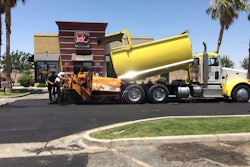

![[Video] Bettis Asphalt Relies on Cat F-Series Paver on Wanamaker Road Project](https://img.forconstructionpros.com/files/base/acbm/fcp/image/2016/12/default.58507c7b77bb2.png?auto=format%2Ccompress&fit=crop&h=167&q=70&w=250)
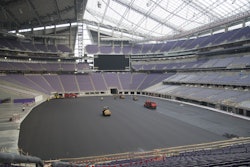




![Lee Boy Facility 2025 17 Use[16]](https://img.forconstructionpros.com/mindful/acbm/workspaces/default/uploads/2025/09/leeboy-facility-2025-17-use16.AbONDzEzbV.jpg?ar=16%3A9&auto=format%2Ccompress&fit=crop&h=135&q=70&w=240)



